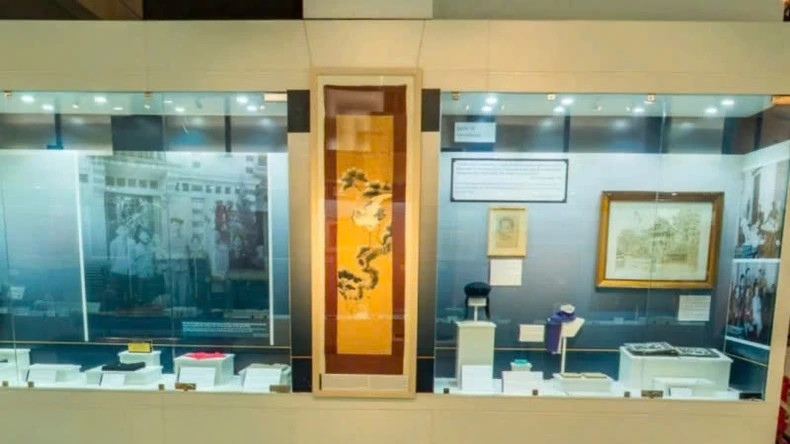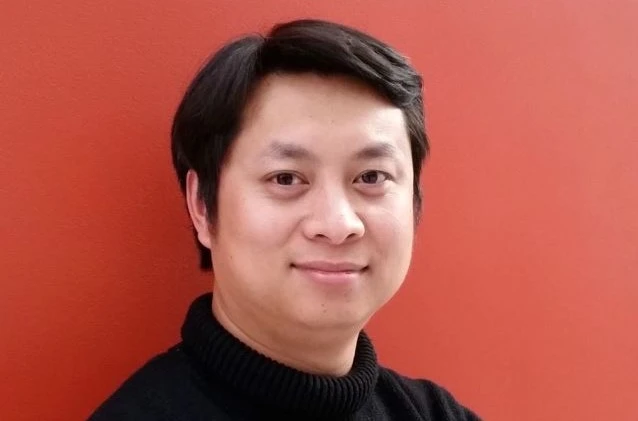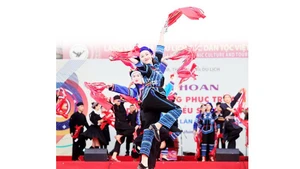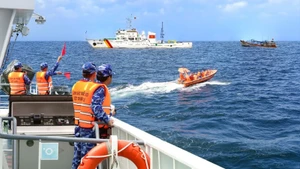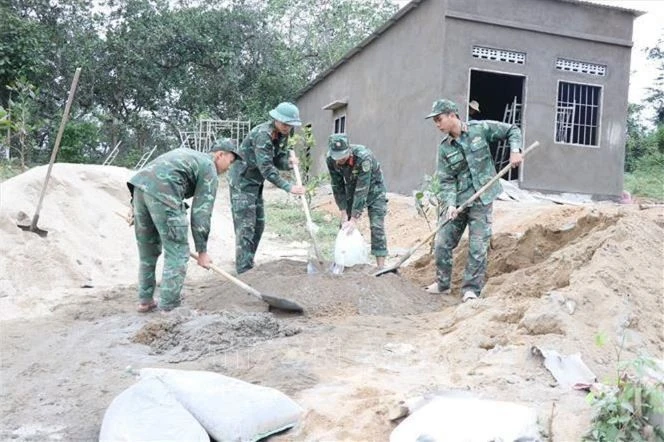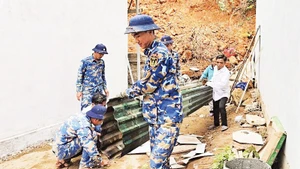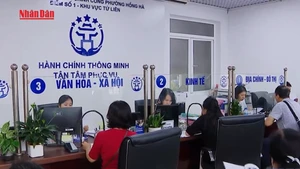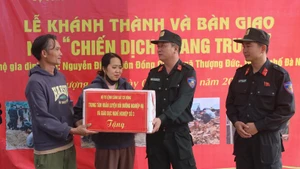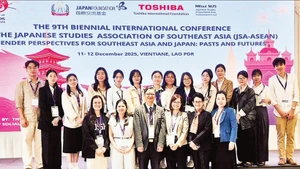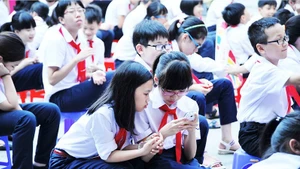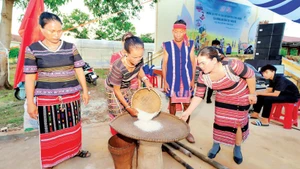One of the gifts is an embroidered painting entitled ‘Tung Hac’ (Pine and Crane). The 80-year-old artwork, measuring 0.58 metres wide and 2.05 metres long, is embroidered on a yellowish-brown silk fabric.
It depicts a crane delicately perched on a pine branch, crafted with meticulous detail. Above the image is embroidered the English inscription: ‘Best greetings from Ho Chi Minh, October, 1945.’ The picture is bordered with maroon brocade fabric.
Sharing the historical story behind this painting, Dr Chu Duc Tinh, former Director of the Ho Chi Minh Museum, said that after the August Revolution in 1945, Colonel Stephen Nordlinger from the US strategic intelligence agency, who commanded a US military unit tasked with rescuing Allied prisoners of war previously held by the Japanese on Vietnamese territory, requested a meeting with President Ho Chi Minh. He sought the Vietnamese government’s support to facilitate his work.
Although the Democratic Republic of Viet Nam was still young and facing many difficulties, President Ho Chi Minh provided assistance and the best conditions for accommodation, offices, and hospitals to care for prisoners of various nationalities.
During their meeting, President Ho Chi Minh also asked Colonel Nordlinger to help transport rice from the south to the north to alleviate the famine in northern Viet Nam caused by the Japanese fascists since early 1945.
In October 1945, President Ho Chi Minh gifted the embroidered painting ‘Pine and Crane’ to Colonel Stephen Nordlinger. In March 1946, Colonel Nordlinger completed his mission and returned to the US, bringing the gift from President Ho Chi Minh.
Nearly six decades later, three generations of Colonel Nordlinger’s family treasured and respectfully displayed the embroidery in their living room.
On May 13, 2006. Jane Coyle, Colonel Nordlinger’s granddaughter-in-law, representing the family, donated the ‘Pine and Crane’ embroidered painting back to the Ho Chi Minh Museum.
“This painting is a gift from President Ho Chi Minh and the people of Viet Nam expressing their thanks to the US friends who supported the country’s fight against famine. The careful preservation and respect of Colonel Nordlinger’s family for this gift reflect their deep appreciation for President Ho Chi Minh and the Vietnamese people. It can be said that the painting symbolises the friendly and harmonious relationship that President Ho Chi Minh laid the foundation for,” said Chu Duc Tinh.
 |
| The embroidered painting ‘One Pillar Pagoda’ |
Another notable gift selected by President Ho Chi Minh to present to his international friends is an embroidered painting of ‘One Pillar Pagoda’. This piece was a gift from President Ho Chi Minh to his benefactor, lawyer Francis Henry Loseby.
On June 6, 1931, Tong Van So (President Ho Chi Minh’s name at that time) was arrested by British authorities at 186 Tam Kung Street, Kowloon, Hong Kong (China). The Hong Kong government detained Tong Van So at Victoria Prison. Lawyer Loseby was hired to defend him.
Francis Henry Loseby and his colleagues used every possible legal argument under British law to defend Tong Van So, forcing the Hong Kong court to acquit him after nine trial sessions, even appealing to the Privy Council. In the spring of 1933, lawyer Loseby personally organised Tong Van So’s departure from Hong Kong (China).
Tong Van So always remembered that gratitude. After 26 years without contact, lawyer Loseby and his wife unexpectedly received the embroidered painting ‘One Pillar Pagoda’ from President Ho Chi Minh in 1959. His family respectfully hung the picture in their living room. After the couple passed away, the embroidery was inherited by their only daughter, Patricia.
 |
| Representatives of the Loseby family present the embroidered picture ‘One Pillar Pagoda' to Ho Chi Minh Museum (Photo: hanoimoi.vn) |
In January 2001, Patricia passed away. Before her death, she requested her relatives to return the embroidered picture ‘One Pillar Pagoda’ to the Vietnamese people. Therefore, later on, Paul Tagg, the Loseby family’s grandson, personally contacted the Ho Chi Minh Museum and sent the picture by air to Viet Nam.
On May 22, 2005, the Ho Chi Minh Museum held a ceremony to receive this particularly meaningful artefact. After acceptance, the painting has been exhibited many times and is now preserved at the Ho Chi Minh Museum. The embroidery stands as evidence of the noble and loyal friendship between President Ho Chi Minh and his benefactor.
According to Chu Duc Tinh, President Ho Chi Minh’s use of exquisite handmade embroidered paintings as gifts to international friends not only promoted the image of Viet Nam but also introduced Vietnamese talent to the world. These simple gifts carried profound meanings from President Ho Chi Minh, helping the public better understand the great personality of the beloved Vietnamese leader.
